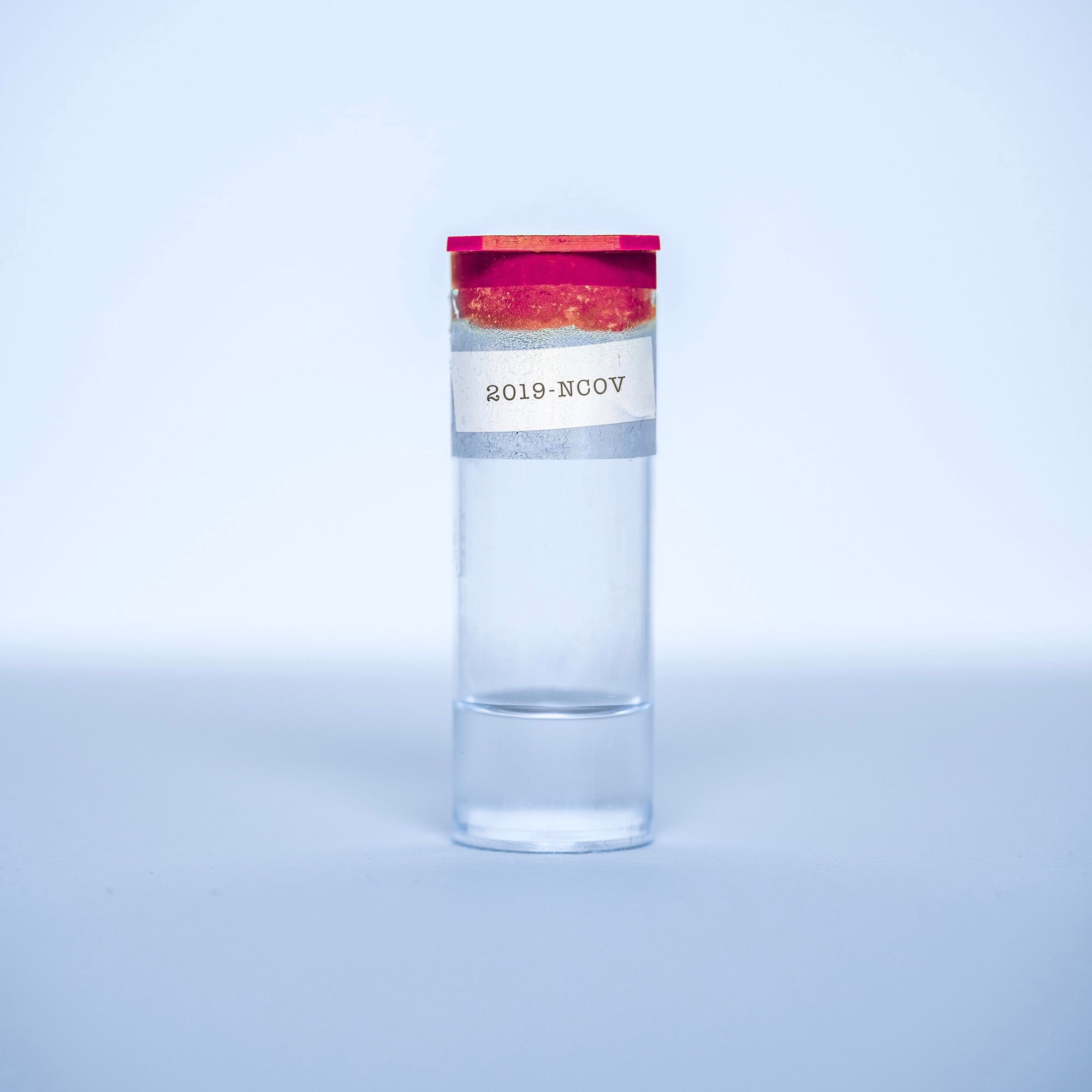If the COVID-19 shutdown was a hammer, what we’ll need next is a swab and a spreadsheet.
“Shut everything down” is clear and easy to understand and most of us have complied, but nerves and budgets have frayed and the path forward is more complex than it was in the beginning.
Yet even while protests have politicized stay-at-home orders, there is a bipartisan and scientific answer to the question on everyone’s mind: “What will it take to reduce restrictions?”
In the Tri-Cities, we need to be able to administer 500 tests per day and we need to add dozens of volunteer and paid contact tracers to the Benton Franklin Health Department’s roster in order to track and control the spread.
What's a contact tracer? One of the best and oldest tools public health experts have is old-school detective work: finding each sick person and then figuring out who they recently interacted with. They interview the patient, then contact exposed people so they can get tested themselves. Lots of potential tools are being developed to support this work, but the actual process has been around forever. BFHD currently has 26 contact tracers (paid and volunteer) and they'll need a lot more to support reopening.
And then, once we have good tests, actionable information, and personnel, we’ll all need to continue our vigilance against this virus as we carefully and thoughtfully reopen the economy.
Since the state’s “Stay Home, Stay Healthy” measures started March 14, Washingtonians have generally done an excellent job of complying. As a result, we’ve begun to flatten the curve in a way that’s been held up as an example.
But as the weeks have worn on and the economy has stumbled, some have wearied of isolation. This weekend, there were two protests in the Tri-Cities against continued social distancing, mirroring similar protests that have popped up around the country.
In the face of economic uncertainty and intense cabin fever, this kind of response is understandable.
While there is certainly room for Governor Inslee to weigh the risks and selectively consider loosening restrictions on certain activities such as fishing or some construction, the Tri-Cities is not yet ready to begin widespread reopening.
There is no question that the costs of the stay at home order have been enormous, both economically and psychologically.
In the Tri-Cities thousands of people have filed for unemployment, high school seniors gave up their graduations, weddings and funerals have been postponed or cancelled, and healthcare workers have risked their lives for the rest of us.
But that sacrifice has not been for nothing.
More than 40,000 people have died of coronavirus in the US, 38 of them in the Tri-Cities—a number that would be much higher without the social distancing we’ve endured.
Similarly, with 636 confirmed local cases our health care capacity has not yet been overwhelmed, though personal protective equipment (PPE) is still being dangerously rationed at Tri-Cities hospitals and many elective procedures have been postponed.
By comparison to the fears many felt in early March, our local situation feels less overwhelming than it might have. After all, the Tri-Cities is not New York and social distancing is working in our area! Surely we can start easing up on some of the restrictions and start sending people back to work, right?
Unfortunately, we can’t. Not unless we want to negate the sacrifice we’ve made thus far and invite dozens more localized outbreaks like the one at the Tyson’s Foods plant near the Tri-Cities, which now has more than 80 confirmed cases.
The basic problem is that because coronavirus spreads asymptomatically for several days, carriers can unknowingly infect many people prior to feeling sick. Earlier recommendations to “stay home if you feel sick” simply aren’t effective to prevent transmission with a virus like this one.
Widespread testing and contact tracing is the key.
On April 16, President Trump unveiled “Open America Up Again”, his phased framework for governors to use as they plan for reopening their states.
As a precursor to Phase 1, the President shared that states must have the “ability to quickly set up safe and efficient screening and testing sites for symptomatic individuals and trace contacts of COVID results.”
On April 17, the Washington State Republican Legislators released their own plan for reopening, which contains a similar requirement that widespread testing be in place before general reopening occurs.
These lawmakers’ emphasis on widespread testing as a prerequisite to reopening is laudable, and it’s broadly consistent with the recommendations of Washington State’s world-class public health and epidemiology experts who are advising Governor Inslee.
What if we just open up?
Isolation fatigue and economic impacts are real, and real peoples’ lives and livelihoods are at stake. That cannot be ignored or downplayed.
But opening up the Tri-Cities and the state before sufficient testing is available will invite a second wave that could be bigger than the first.
Why bigger? Because that’s the nature of exponential growth, especially when coupled with the potential that we may lose the political will to enact the necessary measures to contain it.
In Japan, authorities utilized an isolation-based containment strategy when their first outbreak appeared in Hokkaido, their largest state, in late February. Hokkaido alone was placed under an emergency status, which was then lifted on March 19. At the beginning of April, schools reopened.
Japan thought they’d contained the outbreak, and they did not prioritize developing testing infrastructure. Several weeks later, their case counts nationwide started climbing rapidly. and on April 16 they put the entire country on emergency lockdown. They currently have more than 10,000 cases and their health care system is being stressed to the breaking point.
In the US there are still 5 states that have not put in place some kind of stay-at-home order: Oklahoma, Arkansas, Nebraska, Iowa, and South Dakota. In the last week, their case counts have increased by 53%, 60%, 74%, 82%, and 205% respectively.
These more sparsely populated states have a lot in common with Eastern Washington. Their quickly-rising case count underscores the reality that being a more rural area is no magic bullet when it comes to coronavirus transmission.
Another aspect of many peoples’ personal risk assessment around the coronavirus has centered around the idea that this is a disease that primarily affects older people, and that younger demographics are not at risk.
A growing body of knowledge, though, strongly suggests that this is an inaccurate assumption. Hundreds of young people including many healthcare workers have died of coronavirus nationwide.
Further, the disease permanently damages the internal organs such as kidneys and cardiopulmonary systems of many who survive it.
Despite the early framing of coronavirus as something young people need not fear, it has now become clear that this is not just an “old person’s” disease.
More testing needed
Currently, we’re testing around 4,500 per day in Washington State. County-level test counts are unavailable. On April 14 Governor Inslee stated that, based on guidance from state and national public health experts, we should be testing 13,000 per day in the state in order to safely reopen.
That means that for the Tri-Cities population of 300,000 people, we need the ability to test 500 people per day.This will allow us to broaden testing to include people other than just the most symptomatic, which is what we’re still doing today in accordance with CDC guidelines.
Getting to this goal is not something we can accomplish by ourselves. There are complex supply chains involved. Test capacity involves the test kits, supplies such as swabs that have been in short supply, lab processing capacity, and contract negotiations between public health agencies, clinics, and labs.
New testing methods such as the Abbott Labs 15-minute test show great promise, but their ramp-up has been slow. After steadily increasing for weeks, nationwide testing has plateaued at around 145,000 tests per day, which translates to 38th in the world in testing per capita and well behind similarly hard-hit countries like Italy, Spain, and Germany. According to the Harvard Global Health Institute, we need about three times that many tests nationwide to support safe, widespread reopening.
What you can do
Lack of testing capacity is the single biggest impediment to opening the Tri-Cities and the country. If everyone who is advocating to reopen the economy right now instead channeled their energy towards advocating for increased testing capacity, it would have a significant impact. We could see results in a matter of weeks.
Here are some things that every Tri-Cities resident could do to contribute to this effort:
- Contact Benton and Franklin County Commissioners and ask them to increase funding for the health department to staff up to meet the demand for contact tracing.
- Sign up to be a volunteer contact tracer for the BFHD.
- Call your congressperson and ask them to: (a) support Senator Murray’s bill for $30 billion in emergency funding to expand testing capacity, (b) advocate for revising the CDC’s recommendations that only allow the sickest people to be tested, and (c) advocate for using the Defense Production Act to accelerate production of needed testing supplies such as swabs. (To date it’s only been used for ventilators.)
- Contact your state legislator and tell them you support their plan and thank them for requiring wider testing as a prerequisite to opening.
- Support the healthcare workers in your life.
- Engage in productive dialogue (on the phone!) with people who aren't staying home.
Note: you can find your representatives and their contact info on Ballotpedia.
The bottom line
For the first four weeks of our isolation period here in the Tri-Cities, there was a strong sense of solidarity and mutual sacrifice for the greater good. It was, frankly, beautiful.
That spirit is still present, but the social safety net is proving insufficient to offset the very real economic impacts being felt, and people are growing restless.
Unfortunately, opening up the Tri-Cities economy widely without adequate testing in place would undermine the sacrifices made thus far and put us at risk for a worse wave of coronavirus cases.
The best way forward for the Tri-Cities is to stay the course, and to strongly advocate all relevant stakeholders to allocate the resources and the will to administer 500 tests per day.
Ultimately, this will ensure that the many sacrifices we’ve made thus far aren’t in vain and that we can safely and sustainably reopen our community.
Photo by Vincent Ghilione.


